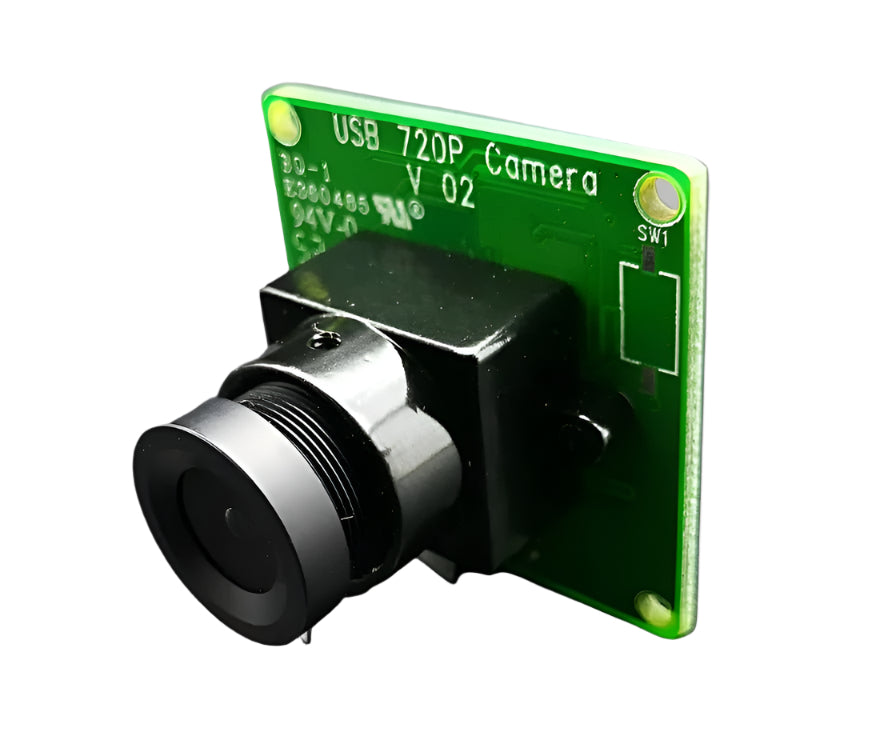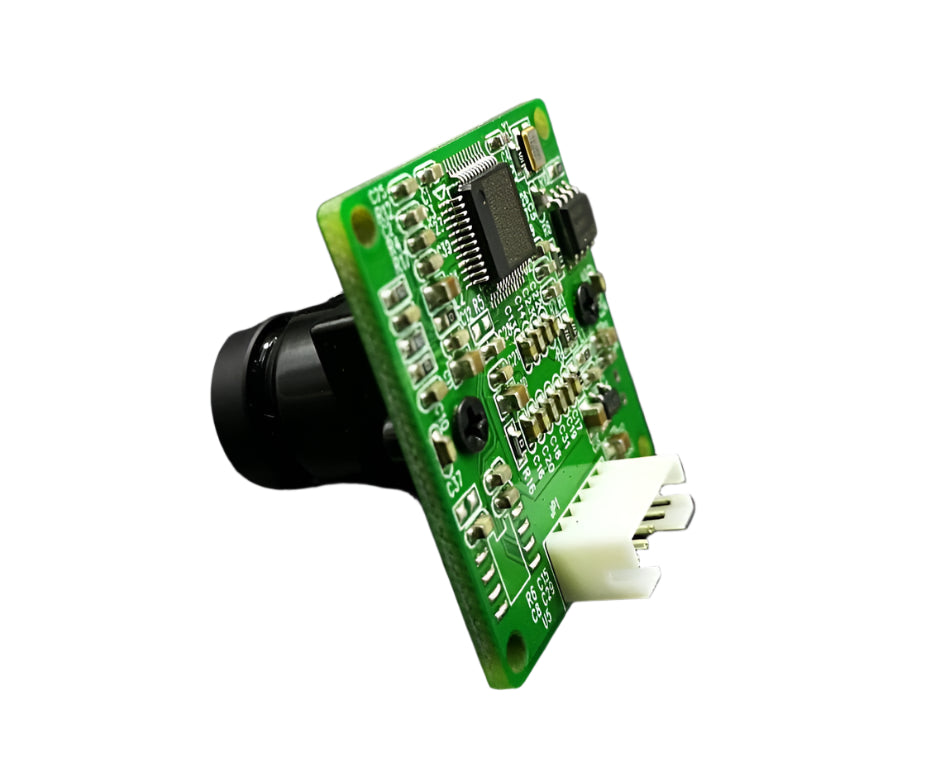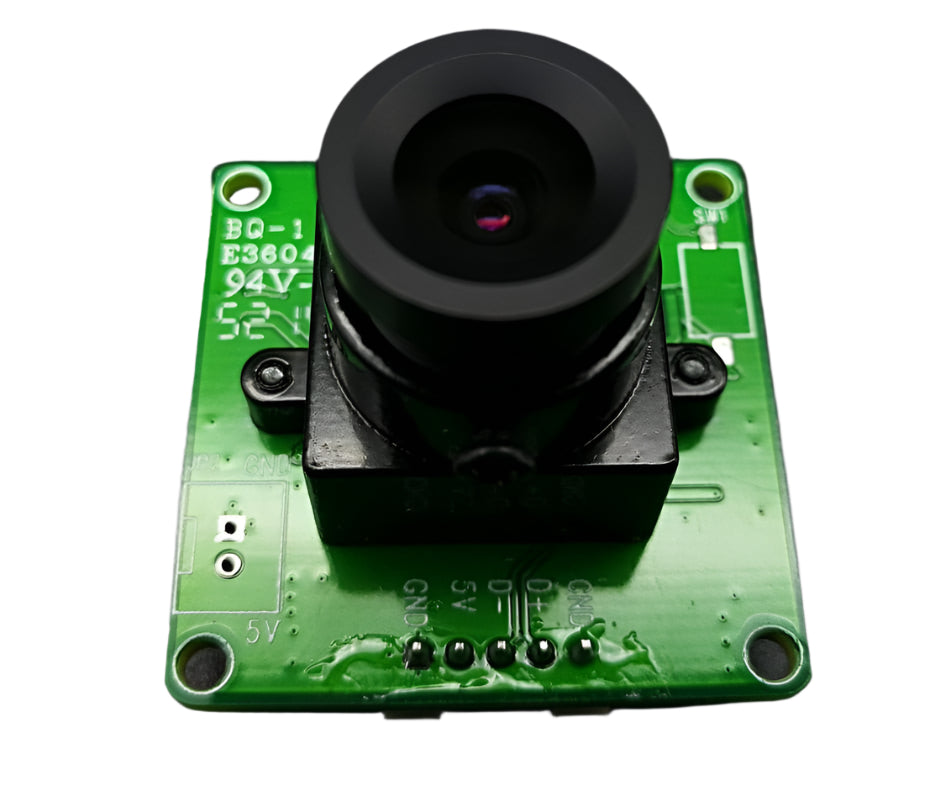


وحدات كاميرا USB عالية الدقة 720 بكسل SB102H منخفضة السعر (10 قطع/الحزمة)
وصف
وحدة كاميرا USB 2.0 CMOS عالية الدقة بدقة 720 بكسل (طراز SB102H) مثالية للعديد من التطبيقات، مثل أنظمة الأمان، وأنظمة الفيديو المحمولة، وهواتف الفيديو، ومراقبة الآلات الصناعية، والألعاب. تستخدم مستشعرات صور عالية الجودة من OmniVision، إحدى الشركات الرائدة عالميًا في هذا المجال الإلكتروني. كما تستخدم تقنية ضغط MJPEG لتحقيق معدل إطارات عالٍ.
تم تصميم وحدة كاميرا USB2.0 عالية الدقة للعناصر الاستهلاكية ومصنعي المعدات والمجربين والهواة.
التطبيقات
مراقبة السيارات والسفن، المعدات الكهربائية، معدات حقول النفط، المعدات الصناعية، مراقبة المواقع عن بعد، مراقبة البيئة، نظام تتبع السيارات وما إلى ذلك.
سمات
- مستشعر CMOS بدقة 720 بكسل للحصول على صورة عالية الجودة واستهلاك منخفض للطاقة.
- واجهة USB 2.0 عالية السرعة لواجهة كاميرا الكمبيوتر عالية الدقة.
- تقنية البكسل النشط للحصول على صورة حادة وإعادة إنتاج ألوان دقيقة.
- أداء فائق في الإضاءة المنخفضة - مثالي لأي حالة إضاءة.
- تقنية ضغط MJPEG المتقدمة
- مخطط صغير جدًا وملف تعريف رفيع للتطبيقات المضمنة.
- معدل إطارات مرتفع. 30-60 إطارًا في الثانية
- عدسة عالية الجودة وقابلة للتغيير للحصول على صورة ملونة حقيقية وغير مشوهة.
- حافلة تعمل بالطاقة مع استهلاك منخفض للطاقة - مثالية للمعدات المحمولة.
- كاميرا مع UVC.
- دعم النظام المضمن
حدود
- مستشعر الصورة
مستشعر الصور OmniVision CMOS الملون 1/4 بوصة OV9712
- معالج الإشارة الرقمية
سونيكس SN9C291
- بكسلات فعالة
1280 (أفقي) × 720 (رأسي) بكسل
- مخرج الإشارة
البيانات التسلسلية لمعيار USB المتوافق 2.0 و1.1
- تنسيق الإخراج
YUV/M-JPEG / PNG/BMP/JPG
- معدل الإطارات
M-JPEG 60 إطارًا في الثانية @ 640 × 480
- نظام التشغيل
Linux 2.6.26 أو أعلى، Windows 7، Windows 8، Android، Windows CE
- عدسة عالية الجودة للحصول على صورة ملونة حقيقية وغير مشوهة
- أداء فائق في الإضاءة المنخفضة - مثالي لأي حالة إضاءة.
- درجة حرارة التشغيل -30 درجة مئوية - 65 درجة مئوية
- استهلاك الطاقة
50 مللي أمبير
- الأبعاد (مم)
32 مم*32 مم
لا يوجد كابل متضمن

وحدات كاميرا USB عالية الدقة 720 بكسل SB102H منخفضة السعر (10 قطع/الحزمة)
If you have any questions, you are always welcome to contact us. We'll get back to you as soon as possible, within 24 hours on weekdays.
-
Shipping Information
Use this text to answer questions in as much detail as possible for your customers.
-
Customer Support
Use this text to answer questions in as much detail as possible for your customers.
-
FAQ’s
Use this text to answer questions in as much detail as possible for your customers.
-
Contact Us
Use this text to answer questions in as much detail as possible for your customers.
FAQs
Please read our FAQs page to find out more.
What transportation method do you use?
All our products are shipped via international express services, such as DHL and FedEx,? completely free of charge
What is DLP 3D printing, and how does it work?
DLP 3D printing is a resin-based additive manufacturing technology that uses light to cure liquid photopolymer layer by layer. It involves projecting digital images onto a vat of liquid resin, where the exposed resin hardens to form each layer of the 3D object.
How does DLP 3D printing differ from other 3D printing technologies?
DLP 3D printing differs from other technologies such as FDM (Fused Deposition Modeling) in its use of light to cure resin, which allows for faster and more precise printing. It also typically offers higher resolution and smoother surface finishes.
Why are UV projectors critical in DLP 3D printing?
UV projectors are critical in DLP 3D printing because they emit the ultraviolet light that cures the resin. The quality, speed, and reliability of the printing process depend heavily on the performance of the UV projector.
What factors should be considered when selecting a UV projector for DLP 3D printing?
When selecting a UV projector, factors to consider include wavelength, resolution, LED lifespan, controller compatibility, and mechanical integration. The ideal projector should match the specific needs and requirements of the DLP 3D printing system.
What are the system requirements for DLP 3D printing?
System requirements for DLP 3D printing include a compatible UV projector, resin vat, build platform, and control system. Specific hardware specifications, such as resolution and interface compatibility, should also be considered.
How do I connect and configure a DLP 3D printing system?
Connecting and configuring a DLP 3D printing system typically involves connecting the UV projector to a PC via USB, launching the manufacturer's proprietary configuration software, and setting up the printer parameters, such as layer thickness and exposure time.
What is "pixelation" in DLP 3D printed models, and how can it be addressed?
Pixelation" refers to the appearance of tiny square or grid-like patterns on the surface of DLP 3D printed models. It can be addressed by increasing the resolution of the UV projector, adjusting the light curing parameters, or optimizing the print path.
What role do TIR prisms play in DLP 3D printing, and why are they important?
TIR (Total Internal Reflection) prisms play a critical role in DLP 3D printing by precisely redirecting light from the micro-mirror arrays to the projection optics. They maintain polarization and ensure that the light is evenly distributed across the resin vat, which is essential for high-quality printing.
What languages and currencies are supported on
The website supports multiple languages, including English, Simplified Chinese, Arabic, Korean, German, and Japanese. It also offers a variety of currency options, such as USD, EUR, AUD, and more, to cater to international visitors.
How can I stay updated with new collections and exclusive offers
To stay updated with new collections and exclusive offers, you can subscribe to the website's newsletter by providing your email address. This will allow you to receive notifications about the latest products, promotions, and news directly to your inbox.
